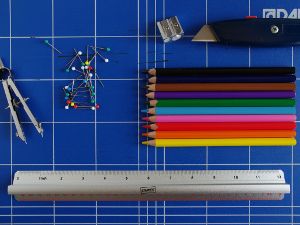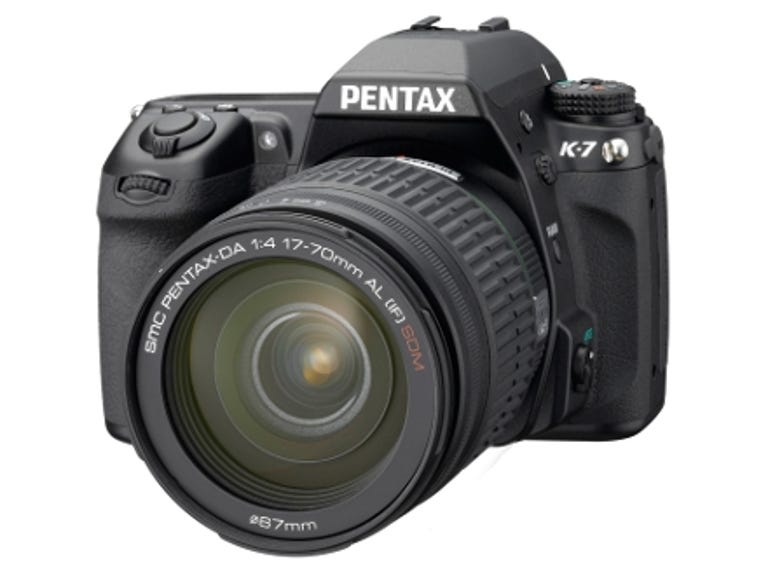 Why You Can Trust CNET
Why You Can Trust CNET Pentax K-7 review: Pentax K-7
The 14.6-megapixel K-7 is a great digital SLR. While Pentax's lens range isn't as good as that of rivals, and the camera lacks some finesse, it packs in plenty of genuinely useful features that its competitors just don't have. The depth and richness of its images are particularly striking, and it's built to last too
The 14.6-megapixel K-7 is Pentax's new top-of-the-range digital SLR, with a price tag to match. Even with Pentax's pretty basic 18-55mm kit lens, it's still going to cost you around £1,050. You can pick up a very decent Nikon or Canon dSLR for this kind of money, so the K-7's going to need some good selling points.
The Good
The Bad
The Bottom Line
Built to last
Professional cameras need to be built for the job. The K-7 is, with its stainless steel and magnesium alloy body, 77 weather- and dust-proof seals, and a shutter unit built for 100,000 operations. The camera's designed to work at temperatures down to -10°C, and the 5.2 frames per second continuous-shooting speed means it can keep up -- more or less -- with its semi-pro rivals.

This test shot shows super-rich colours and, thanks to the in-built corrections, no distortion or chromatic aberration -- not even from the rather basic 18-55mm kit lens. Noise becomes quite prominent past ISO 800, though (click image to enlarge)
You get a live-view mode with sensor-based contrast autofocus (so the mirror doesn't need to flip up for focusing) that also incorporates face-detection capability, and you can shoot hi-def movies using the in-built mono mic or an optional external stereo mic. Movies and pictures are composed and reviewed on a rather good 76mm (3-inch), 920,000-pixel LCD display.
This is all pretty much what the K-7's competitors offer. But some of this camera's cleverest features are on the inside. For a start, the K-7 incorporates optional correction for distortion and chromatic aberration -- two of the trickiest problems for digital photographers. Thanks to these corrections, the otherwise lacklustre kit lens turns in some very good results.
Also, while Pentax's previous anti-shake system was already the best of its type, it's been upgraded for this model. The K-7 features the company's dust-removal and dust-alert system too, whereby the camera shoots a special image which clearly highlights any specks on the sensor.
The K-7 is solidly built, and the 76mm LCD is a delightful specimen
The K-7 has an enhanced version of the expanded-dynamic-range system used in previous models. Now, you can adjust the camera to hold onto highlight and shadow detail which would otherwise be lost. This and the chromatic aberration and distortion correction are three of the K-7's best features.
Still on the subject of dynamic range, there's a mode in which the camera shoots three different exposures in quick succession and automatically combines them in-camera to produce a high-dynamic-range image. That's clever, although you need a tripod to make sure the images line up properly.
A particularly striking characteristic of the K-7 is one that it shares with previous Pentax dSLRs: the depth and richness of its images.
This is a tough, compact and very well-thought-out camera, with genuinely useful features that its rivals don't have. But it does have two significant drawbacks.
Cruder than rivals
The first problem is that the K-7 feels quite lumpy and crude compared to rival cameras from Canon, Nikon and Olympus, although it does have the edge over Sony's dSLRs.
The detail in our charts doesn't look any sharper than you'd expect from a compact, but that's because there's very little in-camera sharpening going on. Besides, the basic 18-55mm kit lens isn't a great performer, and the K-7 would benefit from some better glassware (click image to enlarge)
Perhaps the main reason for this is the lenses. Until Pentax introduces a smooth and silent autofocus system across the board, like Nikon's Silent Wave Motor or Canon's Ultrasonic Motor, it's always going to be at a disadvantage.
The second issue is that there are quite a few lenses in the Pentax range, but it doesn't have the same depth or quality as Canon's and Nikon's. Amateurs and enthusiasts might not be bothered, but professionals need to think long and hard about investing in a system rather than just a single camera.
Conclusion
The Pentax K-7 is a great camera, but you've got to find some decent lenses to go with it. Don't forget that, for roughly the same price, you can get the Canon EOS 50D, and, if you up your budget, you could be looking at the Nikon D300S.
Edited by Charles Kloet
